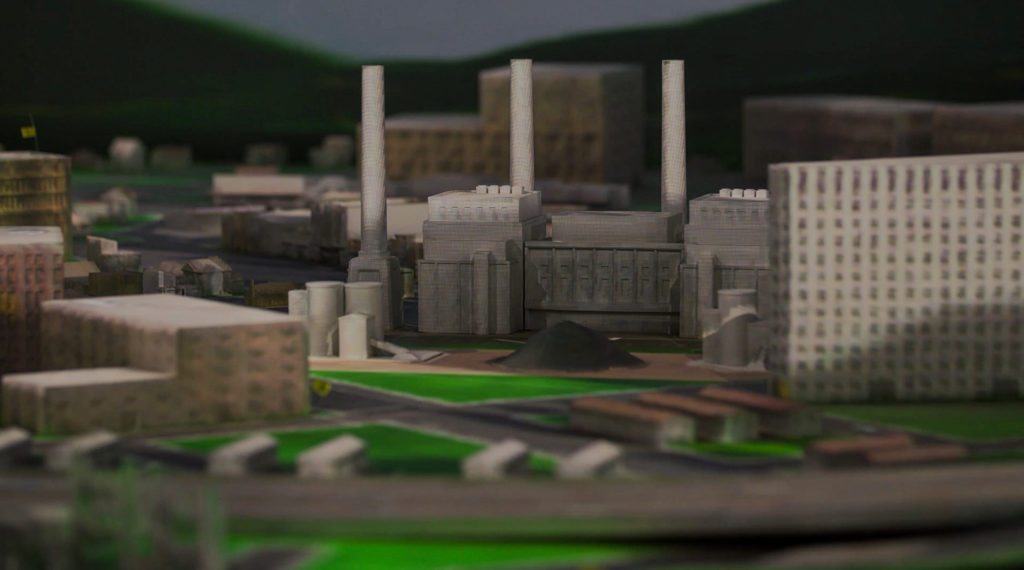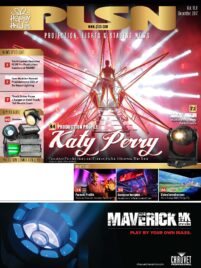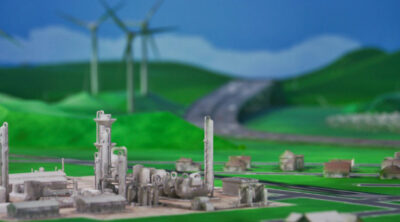
AFTER MOVING FROM THE FIRST FLOOR TO THE FOURTH, the new iteration of the Wiess Energy Hall at the Houston Museum of Natural Science finally has the space to tell the story of the city that energy built. No, it’s not about Houston, but it is, for example, about the drilling technologies pioneered by Howard Hughes Sr. that powered the Texas Oil boom. And it looks at what the future of energy could be, with plenty of wind turbines and solar arrays scattered around the hall.
At 30,000 square feet, the new hall is roughly the size of a football field, providing HMNS plenty of room to pack in more information about drill bits that you could ever ask for. Massive, gyrating rock eaters hang overhead not far from a wall explaining—in great detail—the techniques used to map the layers of rock for potential oil reserves. Different stations dissect the types of crude, offering a chance to turn a wheel to pour samples that illustrate the various colors and consistencies.
In the Eagle Ford Shale Experience, the world’s tamest roller coaster, up to 42 people at a time strap in to experience life as a microscopic proppant injected as part of the fracking process; imagine Honey, I Shrunk the Kids, but inside an oil well. The whole exhibit is littered with these interactive experiences to provide visitors a tactile, first-person encounter with the technologies that make modern life possible.
But tucked away in the far corner is the main attraction, called “Energy City.” In simplest terms, it’s a globe-bending 3-D diorama of the city that mashes together the terrain of Southeast and Central Texas such that rolling hills are in sight of the Houston skyline. Container ships, an oil rig and an offshore wind farm sit adjacent to one another in a non-existent body of water situated along the northwest edge of downtown.
But realism isn’t the point. Energy City sits below an array of projectors and fiber optic sensors that use the 3-D model as a canvas to tell the story of different energy technologies on a 30 -minute loop. There is text and special effects to explain things like geothermal and nuclear energy, but the most impressive details are the cars zooming around the roads, the lights twinkling in the skyscrapers, and the dazzling day-to-night transition. The geography may be off, but it’s hard to care while you take in the light show.



